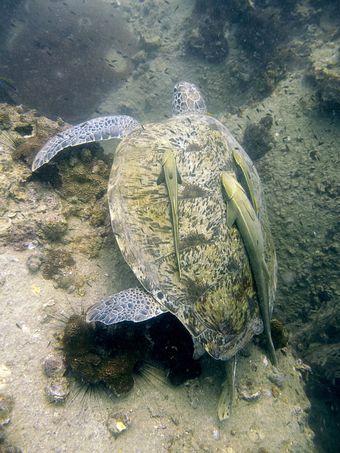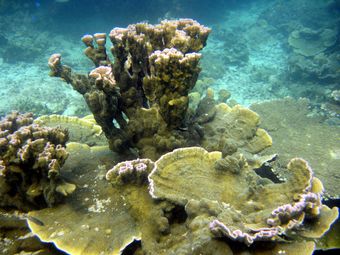- Home
- News
A Question in PADI Open Water Diver Quiz: «Why do I need to continue my diver education?». The correct answer is: «Meet new buddies I can dive with»
Working as a PADI instructor in the dive center on Koh Tao «Scuba Birds», I can see a trend: one dive with people you met first time could grow into a real friendship. Even great distance doesn’t make people to stop communication, they continue to exchange news, experience and photos. They gather in groups for a trip to a dive safari or meet in the dive center «Scuba Birds», go out for a drink and have a chat. One dive can be enough to get the impression of a person. One is a real gentleman who will always help to bring the lady`s diving bag to the boat. Another one is very fussy underwater, changing the position every minute and about to hit you in your face with his fins. Someone more experienced and generous shares the air with his buddy. So it’s just the same underwater as in usual life. People keep coming back to the dive center «Scuba Birds» on Koh Tao and Ko Samui. Diving instructors and divers spending a lot of time together besides diving, for example, to celebrate Thai New year:
[mx_youtuber type="video" id="9sQdid_U1vo" display="none" size="maxres"]
After all, here is the best diving in Thailand with excellent quality and inexpensive diving training.
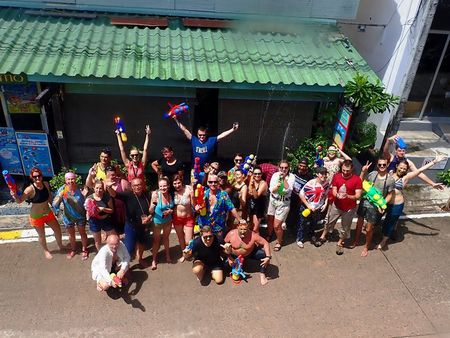
Diving in Koh Tao and Samui allows you to see some amazing stuff like Christmas Tree Worms (Spirobranchus giganteus).
They are Christmas tree shaped
These worms are sedentary, meaning that once they find a place they like, they don’t move much.
They come in many colors including red, orange, yellow, blue and white and though they are small with an average 3.8 cm in span, they are easily spotted due to their shape, beauty and color always makes an
Christmas Tree Worms are found on coral reefs in tropical waters worldwide, in relatively shallow waters less than 30 m.
Christmas Tree Worms are polychaete feeders that feed using their radioles, or «feathers» that circle outward from the central spine, to catch phytoplankton floating by in the water.
Plumes are also used for respiration. Though the plumes are visible, most of these worms are anchored in their burrows that they bore into live calcareous coral. Christmas Tree Worms are very sensitive to disturbances and will rapidly retract into their burrows at the slightest touch or passing shadow.
For more knowledge about it, you can take PADI Fish Identification course.
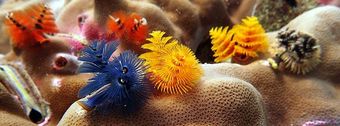
There are a few steps that you can take to save coral reefs on Koh Tao, so other people could enjoy their diving on Koh Tao and Samui. Remember, diving in Thailand allows you to enjoy underwater aquatic life.
So:
— Do not purchase souvenirs made from coral or any threatened or endangered marine species in Koh Tao shops.
— Reduce, reuse, and recycle your trash.
There are many trash beens in Koh Tao and Samui specifically for recycle products.
— Turn off lights when you’re not using them. Use less electricity and reduce greenhouse gases.
— As a diver or snorkeler, choose divecenters that use mooring buoys or drift diving techniques whenever possible rather than anchors that can cause reef damage.
— As a diver, practice buoyancy control skills in a pool or sandy area before diving near a coral reef on the dive sites around Koh Tao. To improve your buoyancy, join PADI Peak Performance Buoyancy Specialty course in our Scuba Birds diving center in Koh Tao or Samui. Make sure your gauges and equipment are secured to avoid accidental contact with the reef, and never touch, stand on or collect coral.
— Support the establishment of coral reef protected areas and encourage better protection and management for those that exist.
— Enroll in an AWARE Specialty diving course like AWARE Coral Reef Conservation with our experienced instructors to increase your knowledge about coral reefs and other aquatic environments.
Located off the North West coastline of Koh Nang Yuan Island, Thailand, Green Rock is the lovely dive site for scuba diving in Koh Tao or Samui and a brilliant choice for PADI Deep Diver Specialty course.
It’s made up of large rock formations and boulders which have created a series of
Hawksbill and Green turtles are regular visitors and the occasional banded sea snake can be seen just off the main formation.
Yellowtail Barracuda school in huge numbers, the sunlight shimmering off their bodies as they surround the top of Green Rock.
On the inside of the caves you can spot dancing Durban shrimp and cleaner shrimp as well.
Huge variety of nudibranchs crawling around the rocks makes Green Rock the true paradise for
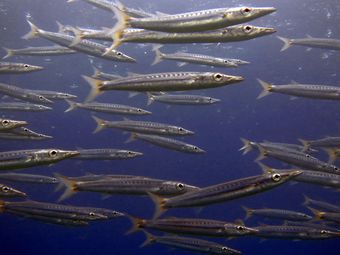
Diving in Koh Tao or Samui usually expects different marine life like sea Turtles. Usually, you can see them on the closest dive sites around Koh Tao: Twins, White rock, Pottery.
Turtles are a marine reptile, and like the sharks are a very ancient group of animals. They can live over a hundred years and have very few natural predators. There are currently 9 species of sea turtles worldwide, and all are endangered or threatened. Although they breathe air, they live almost their entire life in the sea, coming ashore only to lay eggs.
There are two types of turtle that you can see during diving on Koh Tao: The Green turtle and Hawksbill turtle. They look very similar to each other however have some differences in appearance.
The Green Turtle is the most typical sea turtle, possessing a
The Hawksbill has a worldwide distribution, with Atlantic and Pacific subspecies and the Green turtle can be found throughout tropical and subtropical seas around the world, with two distinct populations in the Atlantic and Pacific Ocean.
You can see both types of turtles at many dive sites around Koh Tao and Koh Nang Yuan islands, including sleeping turtles on night dives. If you do see one, make sure to keep a respectful distance and never touch them.
